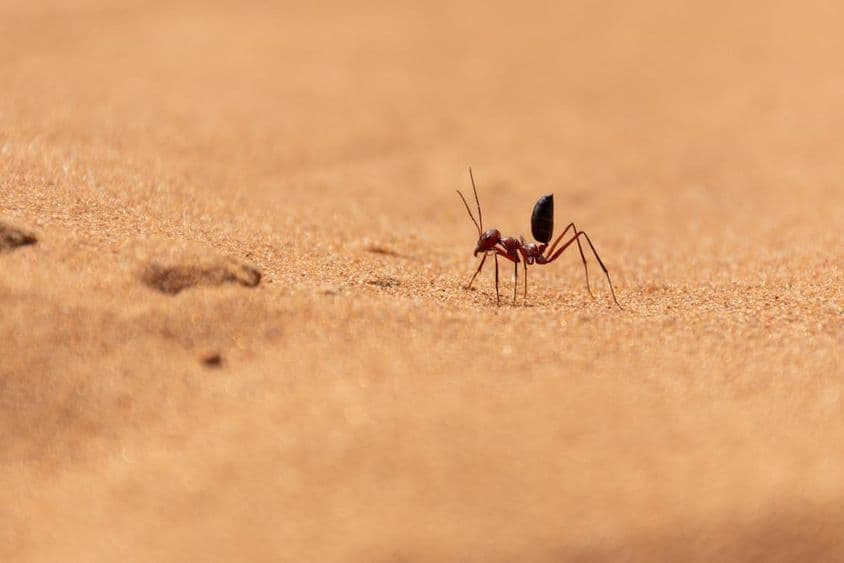Rare Ant Species Discovered in UAE Mountains

New Ant Species Found in Hajar Mountains – Rare Discovery in Sharjah
Nature always holds surprises, especially when committed researchers discover new species. The UAE's biodiversity has welcomed a new unique species as an until now unknown ant species was discovered in the emirate of Sharjah. The new species has been named Carebara sharjahensis, commonly known as the "Sharjah ant."
Background of the Discovery
The discovery is attributed to the work of experts at the Sharjah Environment and Protected Areas Authority (EPAA), who conduct active research to map the region's biodiversity through the Al Dhaid Wildlife Center. The unique ant species was found around the area of Wadi Shees – this region is located on the western side of the Hajar Mountains and is one of the most ecologically diverse areas in the UAE.
Why is the Sharjah Ant Special?
The Carebara sharjahensis is not only noteworthy for being a newly registered species but also because it is exceedingly rare. So far, only a single specimen has been found, despite researchers returning multiple times to the discovery site. This fact suggests that the species probably inhabits specialized microenvironments – living underground and having a reclusive nature that makes it particularly challenging to observe.
This rarity makes the discovery especially valuable since the species' ecological role and distribution are currently almost entirely unknown. Based on the anatomical features described in scientific literature, the Sharjah ant resembles a species previously described in Zimbabwe, but it also possesses many unique characteristics.
Anatomical Features
One of the most interesting features of the species is the well-developed lateral horns on either side of its head, paired with fine sensory hairs. This combination is not only rare but also unique among ants found in the region. Additionally, the ant is a uniform yellow color and has particularly precise structural features concerning its head and thorax – all contributing to its clear distinction from other species.
The discovered specimen was a so-called "soldier" type, which generally protects the colony. This also means that other castes – such as workers or queens – have not yet been found, necessitating further research to fully understand the species.
First in the UAE, Third on the Arabian Peninsula
This discovery marks the first time a species of the genus Carebara has been officially documented in the UAE. Furthermore, throughout the entire Arabian Peninsula, this is only the third known species from this genus, which further enhances the scientific significance of the discovery.
This is not only important for biodiversity but also redirects ecological research directions in the region. The Hajar Mountains house many species that are not found elsewhere – studying them contributes to global biodiversity conservation.
Sharjah's Role in Biodiversity Conservation
In recent years, the emirate of Sharjah has increasingly emphasized environmental protection and the study of natural habitats. The projects coordinated by the EPAA aim to map native and endemic species living in the emirate while monitoring the condition of habitats. The Al Dhaid Wildlife Center functions not only as an observatory but also as a research base where experts continuously collect and analyze data about local flora and fauna.
The discovery of the Sharjah ant is another step in this process, demonstrating that species still awaiting discovery can be found even today in the UAE. It also strengthens the scientific theory that the region's geographical and climatic conditions favor the formation of rare, locally occurring species.
What Comes Next?
Researchers are currently planning additional expeditions to Wadi Shees and other parts of the Hajar Mountains to find more specimens. The goal is to gather more information about the species’ behavior, reproduction, and precise habitat. If an entire colony can be identified, it would significantly expand our knowledge of Carebara sharjahensis and its ecological role.
Nevertheless, this discovery is also a kind of warning: nature is fragile, and each new species discovery implies a responsibility to protect them. The survival of such rare creatures is contingent upon habitat protection and the development of sustainable development plans.
Summary
The discovery of Carebara sharjahensis, the Sharjah ant, marks an exciting new chapter in UAE biological research. The new species is not only significant from a scientific perspective but also reminds us that human curiosity and commitment can unveil nature's most hidden secrets. With this discovery, Sharjah once again proves its leading role in uncovering and preserving the region's biodiversity.
(Source: Announcement by the Environment and Protected Areas Authority in Sharjah (EPAA).)
If you find any errors on this page, please let us know via email.


